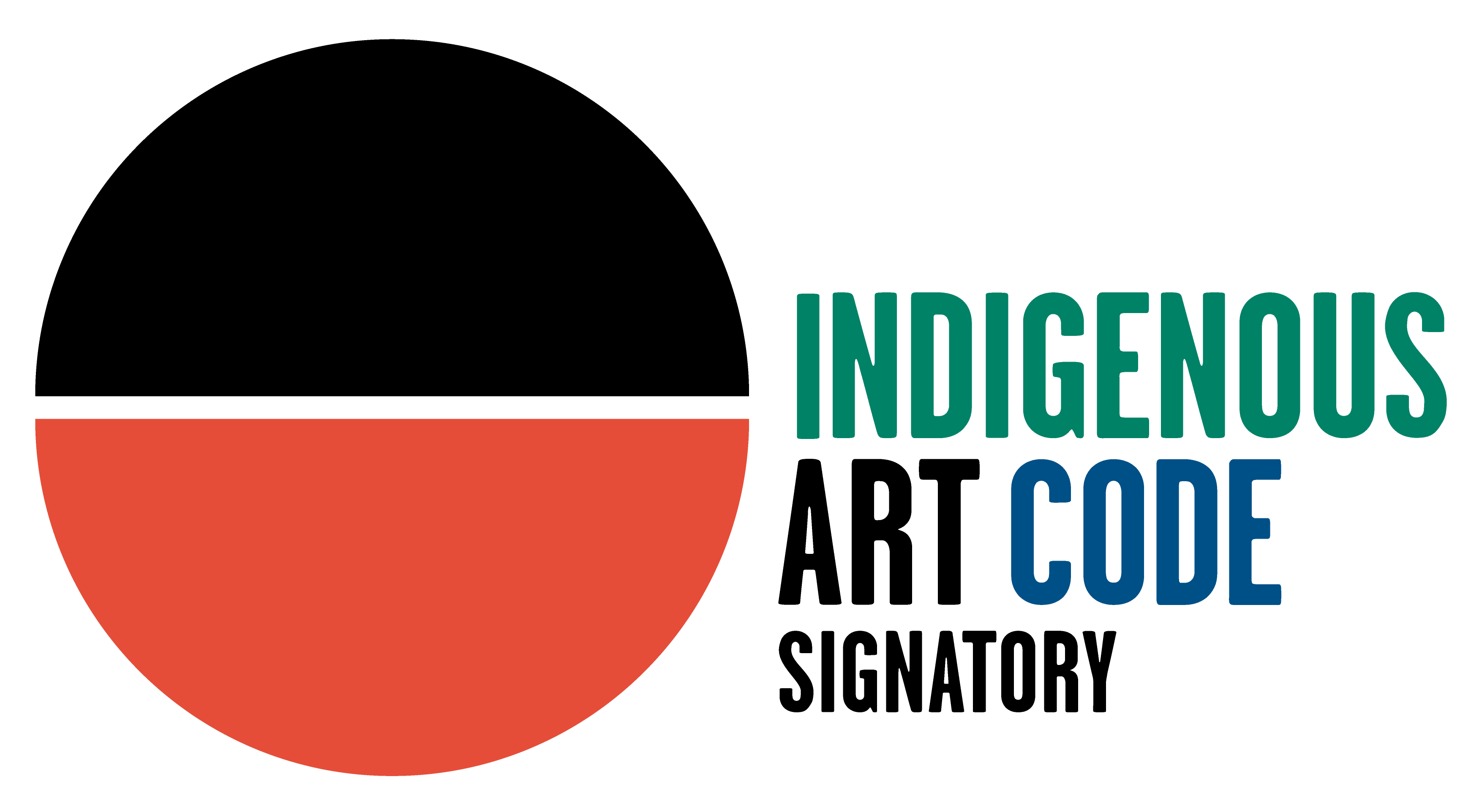Wentja Napaltjarri was born at Malparinga about 1943, and grew up west of Kintore in her father's country, located in the Gibson Desert. Wentja is the daughter of one of the founders of the Desert painting movement, Shorty Lungkata Tjungarrayi and one of his wives, Napulu Nangala. Wentja Napaltjarri has several sisters who are also well knownartists; including step-sister Linda Napaltjarri Syddick (born c. 1936), adopted by ShortyLungkata as a young girl, when he married her widowed mother. When Wentja Napaltjarriwas young, her father and uncle, along with their families including Wentja travelled eastin the footsteps of the Ancestral Emu Men of Tingarri cycles, out of the desert. Theytravelled from water to water. It was hot weather time in the Gibson Desert and there waslittle water to be found. This area is dominated by high tali [sandhills], so knowledge of the exact location of kapi [water], whether hidden rockholes, claypans, natural springs, or soakages, was critical for survival. Wentja Napaltjarri and her family successfullynavigated their journey out of the desert to join other relatives in settlements at Haasts Bluff Mission Outpost about 1948. The family then moved to Papunya around 1960. Aswith so many Pintupi families, Wentja’s extended family established a strong artistic voice in Pintupi culture.
While at Haasts Bluff, Wentja met her husband, Ginger Tjakamarra, who was the son of the artist Makin Napanangka. The couple eventually moved to Papunya, where Shorty Langkata apprenticed each of his daughters. Wentja’s first works were collaborative, helping out the men in the family with their work. While they painted the stories, Wentjadid the dotting in-fill, characteristic of the Papunya Tula artists. Eventually, Wentja lived at Watiyawanu [New Bore], Mt Liebig with her husband and with her children. Wentja beganher own career there, painting for Watiyawanu Artists. Wentja mostly paints Tingarri andKapi Tjukurrpa, the iconography for which has been handed down to her by her father.She also paints Tali [sandhills], Puli [rockholes], Watiya Tjuta [Desert Oaks], and other landmarks central to her Country, and her father’s Country.
Wentja has a very distinctive style and her work highly sought by the Australian and international art collectors. Her work has been exhibited in leading Australian and international exhibitions, including the 2003 exhibition Masterpieces from the WesternDesert, in London. Wentja’s artwork is represented in important collections in Australiaand overseas including Art Bank Sydney, Homes a Court Collection, Art Gallery of South Australia, Art Gallery of Western Australia, Queensland Art Gallery, Kerry Stokes and Thomas Vroom Collections National Aboriginal Art and Culture Institute in Adelaide andArt Gallery of the Northern Territory.

